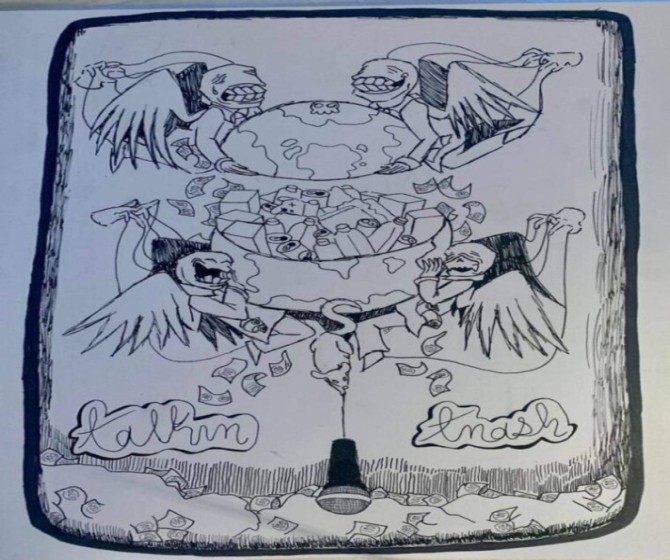
With Philipp Schmidt-Pathmann
Hey, everybody – Philipp here, and today we’re going to talk about what happens to the recyclable materials that you put out with your trash every week. For most of the country, that means one bin, in which all the recyclables get comingled. The truck comes by, loads the contents into the hopper, compresses the content, and goes to a Material Recovery Facility, or MRF. MRFs are often falsely referred to as ‘recycling facilities’ but they do not recycle anything. They are just an attempt to reseparate the materials that should be kept separated at the source in the first place.
There are two main types of MRFs. Dirty MRFs that try to separate ‘recyclables’ from municipal solid or household waste, and ‘Clean’ MRFs that take the comingled materials from the recycling bin.
In theory, a MRF is a facility in which recyclable materials are sorted and packaged or baled for shipment to companies that would use the materials to make new products. The sorting is done by both machine and laborers, the object being to remove any non-recyclable material or contaminants and reseparate the different materials. The end result is supposed to be a high quality and valuable product.
In actuality, mixing glass, paper, cardboard, metals, and plastics always causes cross contamination, making itlikely that most everything except ferrous and non-ferrous metalswill end up being landfilled due to the cross-contamination, which even the most modern MRFs cannot compensate for.
In reality there is not much of a difference between the ability to recover materials from a Clean-or Dirty MERF. Both processes fail to produce high quality materials that industry can or wants to use in lieu of primary resources. There are two main reasons. The first is the inability to reseparate materials that simply don’t mix well like glass and paper. The second is to produce the high standards of primary resources. Just imagine the problems that a lesser quality material can have on the integrity, cleanliness and overall safety of a product. It’s too costly and high of a risk for industry.
It is thus critical to shift back to at-source separation of the materials collected at curbside. One bin for paper and cardboard. For glass it’s best to have even separation by color (see European models). MRFs can only be used for waste fractions that have been collected separate at curbside, such as plastics. Focusing on these material streams enables high quality (more expansive) MRFs to separate these plastics into as many as 20 fractions.
In the recent past, MRFs had a “safety valve” in that countries like China would buy bales of materials, usuallywith significant cross contamination rending the majority as just waste with no actual value.This concoction would usually be dumped in landfills, burned in the open,used as substitute fuels without emission standards or dumped into waterways. Now most overseas countries no longer want our waste and have implemented very strict quality requirements that US MRFs cannot meet. Thus, the pressure to reject truckloads with possible contamination has become higher. The result is a national recycling rate reported as about 32%, although in reality it’s probably lower.
As we discussed in previous weeks, the keys to an effective recycling program are first and foremost a stop to landfilling, consumer education and at source separation of materials. Together, they greatly improve the quality of materials enabling the building blocks of a circular economy while keeping costs down.
Until next time, keep talkin’ trash!




